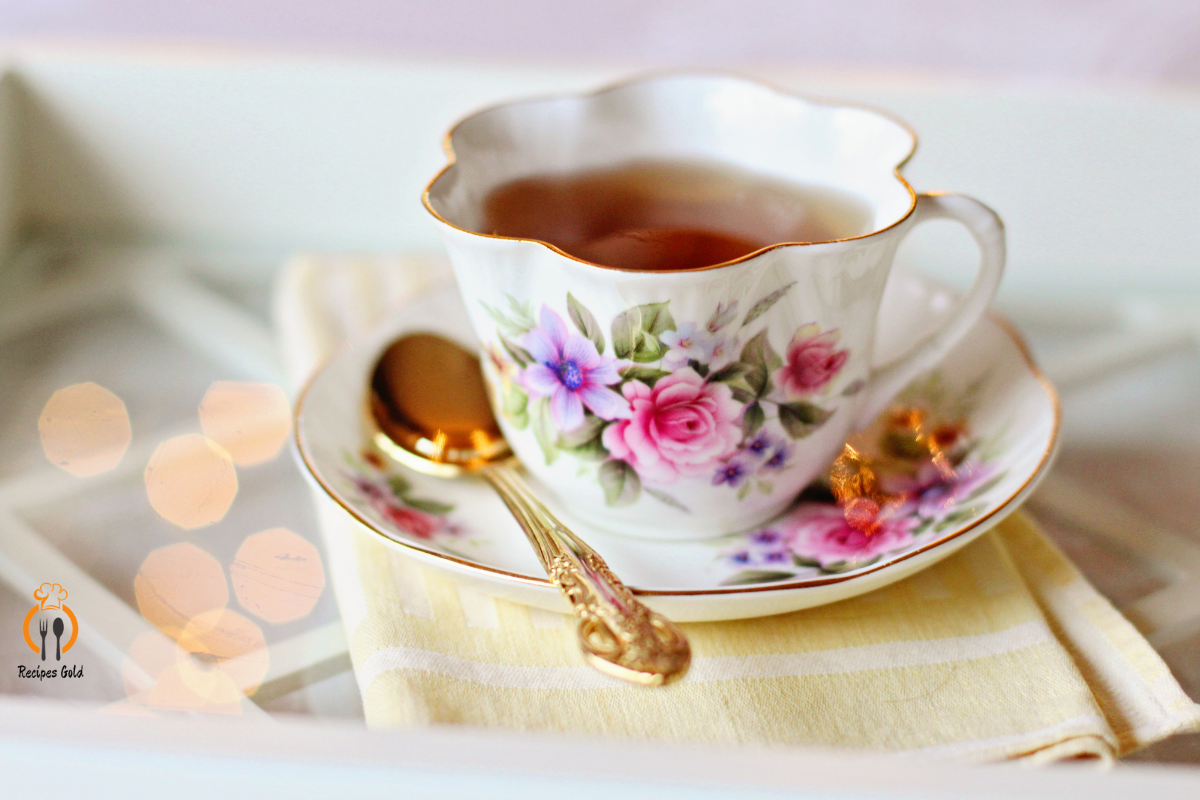Scottish vs English Breakfast Tea – Comparing Morning Traditions
In the early morning light, homes and cafes alike buzz with anticipation for the day’s first cup of tea. Among the myriad choices, two stand out: Scottish breakfast tea and English breakfast tea. This article sets out to explore these beloved brews. We’ll dive into their histories, flavors, caffeine content, and cultural significance. Whether you’re a seasoned tea lover or a curious novice, join us. We’re comparing the bold Scottish breakfast tea with its esteemed relative, the English breakfast tea.
Introduction to Breakfast Teas
Introduction to the Topic
As the day begins, many reach for a comforting cup of breakfast tea. This ritual, cherished worldwide, showcases the unique appeal of morning brews. Notably, Scottish breakfast tea and English breakfast tea offer a study in contrast and tradition.
What is Scottish Breakfast Tea?
Hailing from Scotland’s misty highlands, Scottish breakfast tea stands out for its boldness. Perfect for the traditional Scottish breakfast, its strong, rich flavor kick-starts the day. Typically, this blend includes Assam or African teas, delivering a hearty dose of warmth.
What is English Breakfast Tea?
Meanwhile, English breakfast tea originates from England. It offers a milder yet enriching taste. Blended from Ceylon, Kenyan, and Assam teas, it strikes a perfect balance. Whether enjoyed plain or with milk, it’s a breakfast favorite.
As we explore these teas further, we invite you to savor the rich flavors, histories, and traditions they bring. Stay with us as we delve into what makes these morning brews so special.
Comparing Scottish and English Tea: A Morning Ritual Showdown
Comparison Criteria
Before we dive into the comparisons, let’s set the stage. We’ll focus on three main aspects: the flavor profile, caffeine content, and brewing methods. These criteria will help us understand the nuanced differences between these two cherished morning brews.
The Bold Flavors of Scottish Breakfast Tea
First up, the flavor profiles. Scottish breakfast tea, known for its robust and hearty taste, often contains a higher proportion of Assam tea. This gives it a malty depth that’s perfect for kick-starting a cold morning. On the other hand, English breakfast tea tends to be more balanced. It melds the boldness of Assam with the bright, citrusy notes of Ceylon and the smoothness of Kenyan teas. The result? A versatile blend that complements a wide range of breakfast dishes.
Caffeine Content: The Wake-Up Call of Scottish vs English Breakfast Tea
Now, let’s talk about caffeine. Generally, Scottish breakfast tea packs a stronger punch. Its higher Assam content means more caffeine, making it the go-to for those needing a vigorous wake-up call. Meanwhile, English breakfast tea, while still invigorating, offers a slightly less intense caffeine kick. It’s the preferred choice for those who enjoy a gentler start to their day.
Brewing Methods
Lastly, the brewing methods. Both teas thrive under similar conditions – freshly boiled water and a steeping time of 3-5 minutes. However, the strength of Scottish breakfast tea can handle, and often requires, a longer steeping time to fully release its bold flavors. English breakfast tea, with its more delicate balance, is best enjoyed with a slightly shorter steeping to avoid bitterness and preserve its nuanced flavors.
As we wrap up this comparison, it’s clear that both Scottish and English breakfast teas offer unique experiences. Whether you crave the boldness of a Scottish morning or the balanced elegance of an English dawn, there’s a breakfast tea out there waiting to become a part of your morning ritual. Stay tuned for our next installment, where we’ll explore the cultural and historical backgrounds of these fascinating brews.
Exploring the Rich Heritage of Scottish vs English Breakfast Tea
Historical Origins of Scottish Breakfast Tea
Scottish breakfast tea boasts a robust history, intertwined with Scotland’s rugged landscape and resilient spirit. Originating in the misty highlands, this blend was crafted to invigorate and warm its drinkers against the chill of Scottish mornings. Traditionally, it incorporates a higher proportion of Assam tea, reflecting Scotland’s trade links and appreciation for a strong, malty brew. Over time, it has become a staple, embodying the hearty essence of Scottish hospitality.
Historical Origins of English Breakfast Tea
On the flip side, English breakfast tea emerged from the heart of England, evolving into a beloved morning tradition. Its roots can be traced back to the colonial era, reflecting Britain’s expansive tea trade. Unlike its Scottish counterpart, this blend was designed for balance and refinement, mirroring the English palate. It combines teas from Ceylon, Kenya, and Assam, creating a harmonious brew that has captivated tea lovers worldwide.
Cultural Significance
Beyond their flavors, both teas hold profound cultural significance. In Scotland, Scottish breakfast tea is more than just a beverage; it’s a morning ritual that fortifies the body and spirit against the day’s challenges. Meanwhile, in England, English breakfast tea serves as a symbol of national identity and pride, its versatility mirroring the diversity of English culture itself. Both teas are enjoyed in a variety of settings, from quiet homes to social gatherings, marking moments of contemplation, celebration, and everything in between.
The histories and cultural roots of Scottish and English breakfast teas weave a story of two nations’ relationship with tea. Each blend offers a window into the soul of its people, celebrating the unique heritage and traditions that have shaped them. As we move forward, the narrative of breakfast teas continues to evolve, reflecting the changing tastes and values of their admirers. Join us next as we delve into the modern landscape of tea consumption, examining how consumer preferences and trends shape the world of Scottish and English breakfast teas today.
Consumer Preferences and Trends
Market Trends
In recent years, the global tea market has witnessed a surge in popularity for specialty teas, with Scottish and English breakfast teas leading the charge. This trend is partly driven by a growing consumer interest in authentic, traditional beverages that offer a story along with their rich flavors. Furthermore, health consciousness among consumers has spotlighted the antioxidant properties of tea, bolstering the demand for breakfast blends known for their robust profiles and potential health benefits.
Consumer Reviews and Opinions
Feedback from tea drinkers worldwide highlights a fascinating dichotomy between Scottish and English breakfast teas. Aficionados of Scottish breakfast tea often praise its bold, invigorating character, ideal for kick-starting a rigorous day. Its rich, malty notes are especially appreciated during the colder months, providing warmth and comfort. On the flip side, lovers of English breakfast tea value its balanced blend, which offers versatility. It’s celebrated for its ability to complement a wide array of breakfast dishes, from a simple slice of toast to a full English fry-up.
Through surveys and expert opinions, it’s clear that while both teas enjoy a loyal following, individual preferences can vary widely based on taste, occasion, and even the time of year. This diversity in consumer behavior underscores the rich tapestry of the tea-drinking tradition, where every cup offers a unique experience reflective of its drinker’s personal taste and lifestyle.
As we’ve delved into the preferences and trends shaping the consumption of Scottish and English breakfast teas, it’s evident that their appeal lies not just in their taste but also in the cultural and historical narratives they carry. These teas continue to evolve, embracing new trends while staying true to their roots, offering a comforting and familiar ritual in our fast-paced world.
Stay tuned as we venture next into the realm of health and wellness, examining the benefits and considerations associated with these beloved morning brews.
Health and Wellness
Health Benefits
Both Scottish and English breakfast teas are lauded for their health benefits, primarily due to their high antioxidant content. These antioxidants can play a significant role in reducing oxidative stress and combating inflammation, contributing to overall wellness. Furthermore, drinking these teas has been linked to improved heart health, thanks to their ability to enhance cardiovascular function and lower cholesterol levels.
Tea consumption, in moderation, is also associated with a reduced risk of certain types of cancer and improved brain health. The compounds found in these breakfast teas, including catechins and theaflavins, are believed to offer protective effects against neurodegenerative diseases and may improve mental alertness and focus.
Considerations and Cautions
While the health benefits of Scottish and English breakfast teas are noteworthy, it’s essential to consider their caffeine content. Both teas contain caffeine, a stimulant that can affect individuals differently. For some, excessive caffeine consumption may lead to nervousness, insomnia, or an increased heart rate. It’s crucial for tea drinkers to be mindful of their caffeine intake and adjust their consumption according to their sensitivity and health recommendations.
The Mayo Clinic provides guidelines on caffeine intake, suggesting that adults can safely consume up to 400 milligrams of caffeine per day, equivalent to about four 8-ounce cups of brewed coffee. Given that tea generally contains less caffeine than coffee, tea drinkers can enjoy these breakfast blends while staying within recommended limits. For more detailed information, refer to the Mayo Clinic’s caffeine content guide.
In conclusion, Scottish and English breakfast teas offer a blend of tradition, flavor, and potential health benefits. As with any dietary choice, moderation and awareness are key to maximizing the benefits while minimizing potential risks. As we continue to savor these timeless teas, let’s do so with a mindful appreciation for their rich histories, cultural significance, and the wellness they can bring to our daily routines.
Next, we will wrap up our comprehensive exploration of Scottish breakfast tea and English breakfast tea with a final look at the FAQs, summarizing the insights gathered throughout this journey.
FAQs
Is Scottish breakfast tea good for you?
Absolutely! Scottish breakfast tea is rich in antioxidants, which are beneficial for reducing oxidative stress and inflammation in the body. Regular consumption, within moderation, can contribute to heart health and may lower the risk of certain cancers. However, due to its higher caffeine content, it’s wise to consume it in a balanced manner, especially for those sensitive to caffeine.
Which has more caffeine, English or Scottish Breakfast Tea?
Typically, Scottish breakfast tea has a slightly higher caffeine content compared to English breakfast tea. This difference stems from the blend’s higher proportion of Assam tea, known for its robust caffeine levels. Those seeking a more vigorous wake-up call might lean towards Scottish blends, while others preferring a gentler start to their day might opt for the English variant.
Can you drink breakfast tea without milk?
Certainly, you can enjoy both Scottish and English breakfast teas without milk. Drinking them “black” allows you to fully appreciate the distinct flavor profiles of each blend. While adding milk can smooth out the robustness of these teas and offer a different taste experience, enjoying them without milk showcases their natural complexity and depth.
Conclusion
As we conclude our journey through the world of Scottish and English breakfast teas, it’s clear that these beverages offer much more than a simple morning routine. They carry the weight of history, culture, and a myriad of health benefits, wrapped in their rich, aromatic flavors. Whether you’re drawn to the bold, invigorating taste of Scottish breakfast tea or the balanced, nuanced profile of English breakfast tea, each cup invites you to partake in a storied tradition that spans generations and continents.
Summary of Findings Our exploration revealed the unique characteristics, cultural significance, and health considerations of both teas. While Scottish breakfast tea offers a potent start with its higher caffeine content, English breakfast tea provides a gentler yet equally enriching experience. Both teas, with their antioxidants and potential health benefits, present a compelling case for making them a part of your daily ritual.
Personal Recommendations Discovering the perfect brew is a personal journey, one that involves experimenting with different blends, brewing methods, and accompaniments. We encourage you to explore both Scottish and English breakfast teas in various settings and times of day to find your ideal match. Ultimately, the best tea is the one that resonates with your palate, enriching your mornings and offering a moment of tranquility in your busy day.
Thank you for joining us on this comprehensive tour of Scottish breakfast tea and English breakfast tea. May your next cup of tea be a delightful homage to the rich traditions and vibrant cultures that have shaped these beloved brews. Cheers to discovering your perfect morning companion in the world of breakfast teas!







